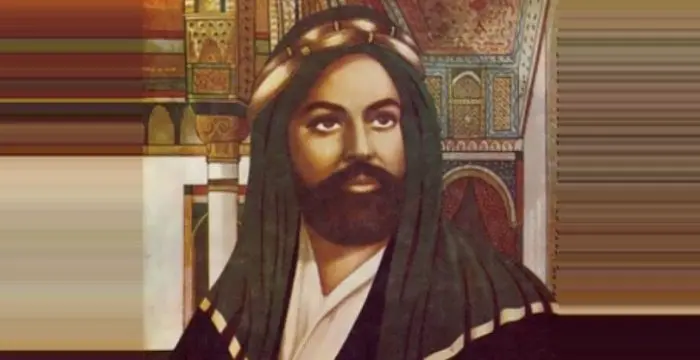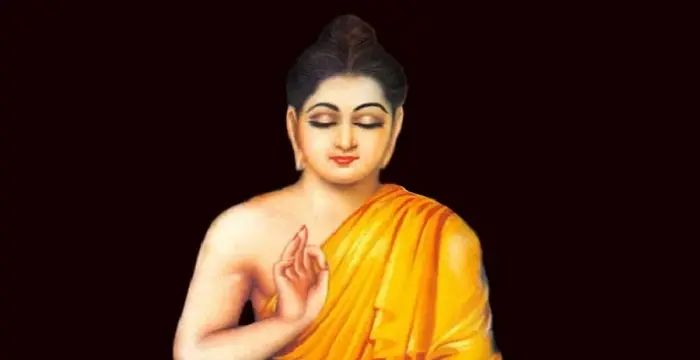
Bodhidharma - Buddhist Monk, Facts and Childhood
Bodhidharma's Personal Details
Bodhidharma was a Buddhist monk who lived during the 5th or 6th century and is credited as the person who spread Chan Buddhism to China.
| Information | Detail |
|---|---|
| Birthday | 483 |
| Died on | January 1, 540 |
| Nationality | Chinese, Indian |
| Famous | Leaders, Spiritual & Religious Leaders, Buddhist Monk, Religious Leaders, Spiritual |
| Siblings | Getsujo Tara, Kudoku Tara |
| Birth Place | India |
| Born Country | India |
| Gender | Male |
| Born in | India |
| Famous as | Buddhist Monk |
| Died at Age | 57 |
Bodhidharma's photo
Who is Bodhidharma?
Bodhidharma was a Buddhist monk who lived during the 5th or 6th century and is credited as the person who spread Chan Buddhism to China. The story of Bodhidharma’s life is largely based on legends. Little is known about his year or place of birth. Since he has been mentioned in ‘The Record of the Buddhist Monasteries of Luoyang’, compiled in 547 CE by Yáng Xuànzh, a noted writer and translator of Mahanaya Sutras, one can reliably assume that he was born sometime before that. There is also a great confusion about the place of his birth. The Japanese tradition regards Bodhidharma as Persian and Ahmad Hasan Dani, a Pakistani scholar, assumed that he was born in Peshawar Valley. But most modern scholars as well as local traditions in India, Southeast Asia and Tibet describe him as a South Indian prince. A follower of Mahayana Buddhism, he travelled to China to spread the true doctrines of Buddhism, transmitting the practice of meditation (Chan in China and Zen in Japan) to the Far East. In Buddhist art, he has been depicted as wide-eyed, profusely bearded, ill tempered and non-mongoloid person. Also referred as the ‘Blue Eyed Barbarian’, he commands much respect in China and Japan. Today he is known as the First Chinese Patriarch.
// Famous Religious Leaders
Prophet Muhammad
Prophet Muhammad was the founder of Islam, one of the most widespread religions in the world. This biography profiles his childhood, life story, achievements and more.
Murad IV
Murad IV was one of the mighty Sultans in the history of the Ottoman Empire. This biography profiles his childhood, family, accession, rule, administration and timeline.
Eckhart Tolle
Eckhart Tolle is a well-known spiritual leader, and author. Check out this biography to know about his childhood, family, personal life, spiritual awakening, etc.
Childhood & Early Year
Nothing is known about Bodhidharma’s year of birth. But scholars believe that he was born sometime in fifth century CE; the two most commonly cited dates being 440 CE and 470 CE. His birthday is celebrated on the fifth day of the tenth lunar month.
As to his place of origin, there are two schools of thought. Scholars like Yáng Xuànzh believe that he came from ‘Western Region’, a historical name referring to the areas west of Yumen Pass, more specifically Central Asia. However, some authors used the term also to mean Indian Subcontinent.
Some modern day scholars hold that he was born in Kanchipuram, located in the present day Tamil Nadu, India. According to these scholars, he was the third son of a Brahmin king of Pallava dynasty. However, his royal lineage could also mean that he came from the warrior caste, Kshatriya.
According to local tradition, Bodhidharma, then known as Jayavarman, showed great wisdom early in his life, becoming interested in the teachings of Lord Buddha from the age of seven. He was his father’s favorite son, a fact that made his elder brothers jealous.
Fearing that their father would bequeath the kingdom to Jayavarman, his elder brothers not only belittled him before the king, but also tried to kill him. Although Jayavarman survived these assassination attempts he soon became wary of court politics.
On realizing that court life was not for him, Jayavarman left home to study Buddhism with Prajñātārā, a great Buddhist teacher who had come to Kanchipuram on the invitation of the king. On entering the monastery, he was named Bodhitara. Later, he was ordained as a monk and was named Bodhidharma.
Bodhidharma studied with Prajñātārā for many years, remaining with her until her death. Before she died, she told him to go to China and spread the true teachings of Lord Buddha in that country.
Later Life
After his master’s death, Bodhidharma set out for China. There is some confusion about the exact route he took. According to one tradition, he traveled by sea to China, and reached the present day Guangzhou, then known as Panyu. From there, he went on foot to Nanjing.
Some scholars believe that he took a land rout. After crossing the Pamir Plateau on foot he must have followed the course of Huang He, ultimately reaching Luoyang, then an active center for Buddhism, taking three years to complete the journey. However, there is also confusion about his arrival date.
According to Daoxuan, author of ‘Continued Biographies of Eminent Monks’, Bodhidharma reached China sometime before 479 CE during the reign of Liú Sòng Dynasty. But in ‘Anthology of the Patriarchal Hall’, compiled in 952 CE, we find that he reached China in 527 CE during the reign of Liáng Dynasty.
In China, Bodhidharma became known as Ta Mo and started preaching the core of the Buddhist religion, putting more emphasis on meditation and enlightenment than on reading of scriptures. This angered many established masters, who emphasized more on reading. They therefore rejected his teachings. Left alone, he began to wander.
According to ‘Anthology of the Patriarchal Hall’, he was granted an audience with Emperor Wudi of the Nan (Southern) Liang in 527 CE, the very year he set foot in China. Here too, he spoke the truth, failing to please the Emperor.
Noted for his good works, the emperor asked Bodhidharma how much merit he had acquired by his good works. To this Bodhidharma said, since the emperor had worked for acquiring merit, he had gained none. Naturally, this did not please the emperor.
To the emperor’s other queries, he said that there is no noble truth or ‘sacca’ other than ‘Shunya’ (emptiness) and that he knew not who he was. A follower of Mahayana path, he intended to shake the emperor out of his self-glorification and set him on a path to enlightenment.
He knew that he had to be harsh in order to instill his message, a job that could not be done with gentle words. The emperor failed to grasp the inner meanings of these answers and he was sent away.
When Bodhidharma failed make any impression in South China, he headed for north. Crossing the Yellow River, he subsequently reached Song Mountain, the home to the Shaolin Monastery. On the way, he met a Buddhist monk called Shen Guag, who eventually became his disciple and became famous as Dazu Huike.
When he reached Shaolin Monastery, the monks refused him admission. So, Bodhidharma sat in meditation outside the monastery, facing its wall. Some scholars, however, dispute this and believe that he chose a nearby cave and began to meditate.
For nine years, Bodhidharma meditated constantly without ever leaving his seat or speaking to anyone. According to a legend, one day he fell asleep while meditating and to prevent its recurrence he cut off his eye lids. His picture showing a wide-eyed stare might be based on this legend.
It is also said that a tea plant sprung up where his eye lids fell and in this process he discovered tea. However, that is not true. It is more likely that he started the practice of drinking tea among the monks so that they would not fall asleep while meditating.
It is also said that sitting in the same posture for nine long years caused him to lose the use of his leg. According to Japanese tradition, it caused his arms and legs to fall off, leading to the creation of Daruma dolls, which do not have any leg.
There are many stories concerning what happened to Bodhidharma after the nine years of ‘wall-gazing’. According to some version, he died while sitting upright in his seat. But the more popular version states that he entered Shaolin Monastery after this period.
It is said that the monks in the Shaolin Monatery were so impressed by his dedication that they invited him in. Here he started teaching, putting emphasis on meditation, where it began to be known as ‘Chan’, a derivation of Sanskrit ‘Dhyana’.
While teaching ‘Chan’, he soon realized the long period of study had robbed the monks off their vitality and they had become too weak to concentrate. Therefore, along with teaching meditation technique, he also started teaching them series of exercises, called ‘Shiba Luohan Shou’ (Luohan’s 18 hands).
In addition to ‘Luohan’s 18 hands’, he also taught his students two other sets of exercises known as ‘Yi Jin Jing’ (Sinew Metamorphosis Classic) and ‘Xi Sui Jing’ (‘Bone Marrow Cleansing’). During this period, he also wrote two books called ‘Yi Jin Jing’ and ‘Xi Sui Jing’.
During his stay at Shaolin Monastery, he went on a long tour, visiting Sumatra, Java, Bali, and Malaysia, teaching the Mahayana doctrine of Buddhism as well as forms of martial art. According to local legend in Malaysia, he introduced an indigenous form of martial art called ‘silat’ in that country.
After the tour, he returned to China through Nanyue, remaining at Shaolin monastery for the rest of his life. He had four main disciples, Dazu Huike, Dao Fu, Dao Yu and Zong Chi, a num. Among them, Dazu Huike became his successor.
He is believed to have written many books. Text associated with him are 'Two Entrances and Four Practices', 'The Bloodstream Sermon', 'Dharma Teaching of Pacifying the Mind', 'Treatise on Realizing the Nature’, ‘Bodhidharma Treatise’ , ‘Refuting Signs Treatise’ and ‘Two Types of Entrance’.
Major Works
Bodhidharma is best remembered for transmitting Chan Buddhism to China. Until his time, Buddhism in China was based mainly on studying of scriptures. It was Bodhidharma, who brought the concept of nirvana through meditation to China.
Bodhidharma is also explicitly associated with the Laṅkāvatāra Sūtra, a prominent Mahayana Buddhist sutra first translated into Chinese by Dharmarakṣa. Bodhidharma based a great part of his teaching on this text, making it an important element of Chan and Zen Buddhism.
Death & Legacy
Just as the year of his birth, the year of his death also remains a mystery. But most scholars agree that he died in the Shaolin Monastery sometime in the sixth century.
Today, he is considered to be the twenty-eighth Patriarch in a lineage tracing back to Gautama Buddha. He is also known as the First Chinese Patriarch.
Trivia
According to legend, three years after his death, Bodhidharma was seen walking across the Pamir Heights with a single shoe in his hand by Ambassador Sòngyún of northern Wei. In reply to the ambassador’s query, Bodhidharma said that he was going home, forbidding him to mention this to anybody.
When Sòngyún related the incident to the Emperor, he was arrested for lying because it was a well-known fact that Bodhidharma had passed away. But when his grave was exhumed, it was found that there was only one shoe in it.
// Famous Spiritual
Prophet Muhammad
Prophet Muhammad was the founder of Islam, one of the most widespread religions in the world. This biography profiles his childhood, life story, achievements and more.
Murad IV
Murad IV was one of the mighty Sultans in the history of the Ottoman Empire. This biography profiles his childhood, family, accession, rule, administration and timeline.
Eckhart Tolle
Eckhart Tolle is a well-known spiritual leader, and author. Check out this biography to know about his childhood, family, personal life, spiritual awakening, etc.
// Famous Spiritual & Religious Leaders
Swami Vivekananda
Swami Vivekananda was the chief disciple of Sri Ramakrishna, and was responsible for awakening India spiritually. Check this biography to know in detail about his life, profile and timeline.
Prophet Muhammad
Prophet Muhammad was the founder of Islam, one of the most widespread religions in the world. This biography profiles his childhood, life story, achievements and more.
Murad IV
Murad IV was one of the mighty Sultans in the history of the Ottoman Empire. This biography profiles his childhood, family, accession, rule, administration and timeline.
Eckhart Tolle
Eckhart Tolle is a well-known spiritual leader, and author. Check out this biography to know about his childhood, family, personal life, spiritual awakening, etc.
Russell M. Nelson
Russell M. Nelson is an American religious leader, author, and philanthropist. Check out this biography to know about his birthday, childhood, family life, achievements and fun facts about him.
Gautama Buddha
Gautama Buddha was a spiritual leader on whose teachings Buddhism was founded. This biography of Gautama Buddha provides detailed information about his childhood, life, achievements, works & timeline
Bodhidharma's FAQ
When was Bodhidharma died?
Bodhidharma was died at 0540-01-01
Where was Bodhidharma died?
Bodhidharma was died in Shaolin Monastery, Zhengzhou
Which age was Bodhidharma died?
Bodhidharma was died at age 57
Where is Bodhidharma's birth place?
Bodhidharma was born in India
What is Bodhidharma nationalities?
Bodhidharma's nationalities is Chinese, Indian
Who is Bodhidharma siblings?
Bodhidharma's siblings is Getsujo Tara, Kudoku Tara
How famous is Bodhidharma?
Bodhidharma is famouse as Buddhist Monk






